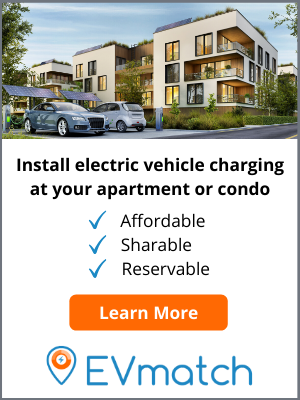Blog
3 Ways To Spur Electric Vehicle Adoption
October 4, 2019
Post Author

As the Chief Strategy Officer at E Source – a 35-year-old consulting and research company for North American electric and gas utilities – I have been involved with electric vehicles (EVs) for more than a decade. The industry remains largely focused on the strategic and technical challenges of this opportunity, when the primary obstacle/opportunity sits between customer’s ears.
From a strategic standpoint, the shared benefits of rapid EV adoption are not in question. Electrifying the transportation sector could increase US electric utility revenues by 25 percent, while simultaneously putting downward pressure on rates and providing broad social benefits. It is a win-win-win. Most utilities are open to capturing standard returns on charging infrastructure investments; however, only a select few have promoted growth in more direct, customer-centric ways. As an industry built by engineers, we also quickly default to the technical challenges of EV adoption, but that isn’t it either – we’ll figure it out. The real problem is that we’re assuming EV adoption is inevitable. It’s not. People buy cars…and people are, in the brilliant words of Dan Ariely, Predictably Irrational.
The reality is that for all the media hype, EVs are still in the innovator and early adopter phases of the innovation diffusion curve. In order to cross “the chasm” and push through to mass-market adoption, we will have to address the needs and wants of the innovators and early adopter market segments first.
Marketing to the more conservative and cynical customer segments is simply a waste of resources, at a time when we need strong EV sales nationally to convince original equipment manufacturers (OEMs) to shift production lines towards electric. So we know we need to focus on consumers that are open to new technologies like EVs, but what do we actually know about these folks? From a demographics and targeting standpoint, we know they:
- generally live in urban and suburban areas
- are environmentally conscious
- own a smart thermostat
- likely participate in green energy and efficiency programs
- have incomes higher than $75k
Nothing overly surprising there, but what makes these consumers tick emotionally? What latent drivers motivate these buyers?
Through our ethnographic research at E Source, we have been getting into the daily lives, experiences and emotional underpinnings of people. Instead of sending out pre-set surveys and looking for credible sample sizes, ethnographic researchers visit customer’s homes and businesses. They ask probing questions about their lives, their feelings and the moments that matter. This approach drives towards a deeper sense of what is ACTUALLY motivating human behavior.
We found eight major themes in E Source’s research that OEMs and utilities can/should address, but for the purposes of this blog, I’m only going to focus on three.
1. EVs generate significant excitement for innovators and adopters
On one level, this isn’t all that different than how customers react to new iPhones; however, the EV experience is surprisingly visceral, especially when consumers actually have the chance to experience the car. Customers are surprised and delighted by the acceleration, the handling, the easy charging experience, as well as the impressive technology underlying the EV platform. There are few energy technologies today (think high-efficiency water heaters, HVAC or LED bulbs) that generate this level of excitement. They just aren’t that “cool”. Nestcomes the closest because it is/was fundamentally new and had a compelling form factor, backed by self-learning and connected tech. EV’s inspire an even greater level of enthusiasm among consumers. How might we enable those experiences and leverage consumer excitement to a purchase action?
2. EVs make people feel smart
When EV buyers understand the various benefits, they feel like they are making a smart decision all the way around. Incentives still have a significant impact on early-adopter purchasing decisions today, but the sophisticated EV buyer connects the dots between all the myriad of other benefits as well. Starting with the upfront state and federal incentives, consumers then add in the gas savings, reduced maintenance costs, and even the time savings from home charging. This holistic mental story creates a positive halo effect that stays with buyers. What other companies create that level of emotional loyalty? Apple, Southwest, Costco, etc. These are all brands that connect and reinforce value with customer experience. EVs have similar attributes that we should promote.
3. EVs assuage climate guilt
Consumers view zero-emission driving as a significant and meaningful contribution towards reducing their environmental footprint. It makes environmentally-minded consumers feel like they can actually do something that matters. Like solar, EVs make consumers feel empowered and reduce their emotional burden over time, which is a significant value for many. Additionally, EVs make a strong statement to the community about the buyer’s values. EV drivers vote with their wallets and drive their cars with pride. Consumers may not be able to articulate this, but the power of self-actualization is a critical driver for many purchase behaviors and consumer actions, not limited to EVs. How might we emphasize and celebrate the reality that purchasing an EV is a powerful investment in the future?
The EV Movement and Community
EVs make consumers feel like they are part of something bigger. It is a movement, a tribe, a differentiating personal identity. There is perceived social status that comes from getting on the EV bandwagon, which is not all that different from other new technologies, music/bands, TV, art, social media, and much more…except that this actually matters! It is emotionally deeper for environmentally-minded early adopters. Creative solutions like EVmatch – the peer-to-peer network that is making charging easier – are tapping into the sharing model and fostering a feeling of community and impact.
The reality is that EVs have many benefits to consumers. Whether financial, environmental, practical, or psychological, EVs remain a win-win-win. Let’s figure out how to get consumers behind the wheel of the coming generation of EVs. We must engage the innovator and early adopter segments first. After we’ve built that critical foundation, we can move on to the mainstream market. We hope and expect that utilities and OEM’s will join the movement to drive EV sales and use some of the concepts above to delight their next generation of customers. It is an exciting time because EVs are one of the unique technologies and experiential platforms that creates excitement and loyalty. Let’s drive electric transportation forward by promoting not only this innovative technology, but the human factors that underpin its value!









